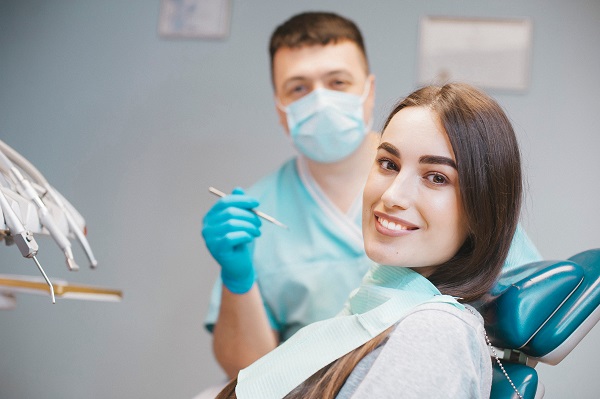Restorative Dentistry Procedures After Teeth Grinding

Looking into your restorative dentistry options? Teeth grinding (also known as bruxism) is common, affecting many people worldwide. This condition can lead to issues such as chipped teeth, cracked teeth, chronic headaches, TMJ disorder, and trouble sleeping. When tooth damage occurs as a result of teeth grinding, restorative dentistry is necessary to repair the areas of concern.
Restorative dentistry for bruxism
The type of restorative dentistry your dentist recommends depends on the severity of the damage and the location of the damaged teeth. Three main types of restorative dentistry for bruxism include dental crowns, composite bonding, and porcelain veneers. A dental night guard can help prevent future instances of tooth damage caused by grinding.
Dental crowns
Dental crowns, also called dental caps, cover damaged teeth entirely. They are customized to fit the exact tooth they are placed over, and they offer cosmetic, functional, and oral health benefits. The main types of dental crown materials are ceramic, porcelain fused to metal, metal alloy, gold alloy, and ceramic. Each offers unique benefits. In general, porcelain fused to metal, metal alloy and gold are ideal for teeth further back in the mouth (premolars and molars), whereas more visible teeth are often better treated through a ceramic dental crown.
Composite bonding
Composite bonding is a restorative dentistry procedure that involves the use of composite resin. The resin material is applied and bonded to the tooth to fix imperfections. When used to treat teeth that are damaged by grinding, composite bonding can lengthen the tooth and protect the deeper layers of the tooth structure. However, composite bonding is most appropriate for repairing minor damage. The resin material is also not as durable as a dental crown, particularly when used for premolars and molars. However, composite bonding is a good option (and a more affordable one) for more visible front teeth.
Porcelain veneers
Porcelain veneers are layers of porcelain that are custom-crafted in a laboratory. They are placed over existing damaged teeth to restore the appearance and health of the tooth. When used for restorative dentistry after teeth grinding, porcelain veneers can fix shortened teeth, chips, and cracks. They are most appropriate for front teeth and those who choose them typically do so because of the cosmetic benefits they offer. Veneers attach to the visible surface of teeth, so they may not work as well for repairing molars and premolars that have worn-down enamel.
A dental night guard (preventive)
Of course, an ideal situation would be to never allow teeth grinding to affect teeth. One way to prevent further damage to teeth from bruxism after restorative dentistry is to wear a custom night guard from your dentist. This ensures teeth do not touch while the person is asleep, and they may also reduce the risk of jaw clenching as well.
Talk to our dental team about teeth grinding treatment
You can learn more about teeth grinding prevention and restorative dentistry by calling our friendly team today. We can answer your questions and help you decide on the best course of treatment during a consultation visit.
Request an appointment here: https://www.smilegallerydental.com or call Smile Gallery Dental at (714) 998-2241 for an appointment in our Orange office.
Check out what others are saying about our dental services on Yelp: Restorative Dentistry in Orange, CA.
Recent Posts
There are a few great dental restoration options for someone needing to repair teeth that are in bad shape. One of the most popular ones is dental fillings, which can be used to restore and renew teeth that are damaged or decayed. Dentists typically recommend fillings for a patient that requires a minor dental restoration…
If you have been involved in an auto accident, you may be considering the right types of dental restoration. The dental damage you may have suffered can be either indirect or direct. Indirect damage occurs when your mouth closes abruptly, while direct damage occurs when the mouth itself is hit. No matter what type of…
A Dental restoration is administered by dentists to help patients repair teeth that have become damaged from injuries or cavities. There are a lot of different dental restoration options, each benefiting patients in different ways. Knowing which procedure is best requires careful consideration and the assistance of a dentist. Ready to learn more?The following information…
Tooth replacement is a part of many smile makeover treatments. For multiple missing teeth, the dentist may recommend a partial or complete denture or an implant-supported bridge or denture. However, the treatment options for a single missing tooth are different and include a fixed bridge, an implant-supported crown, and a removable partial denture. The best way…


